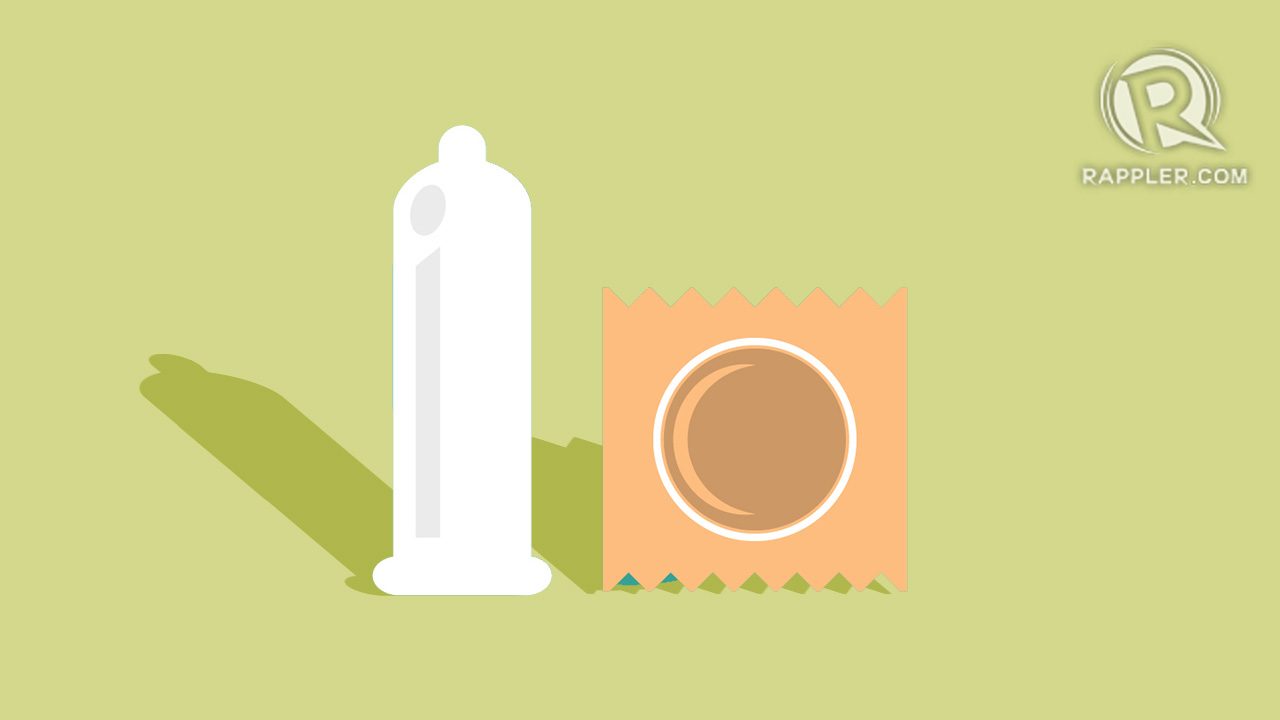SUMMARY
This is AI generated summarization, which may have errors. For context, always refer to the full article.

MANILA, Philippines – If you’ve ever bought a box of condoms at a convenience store, you’ll know that the sight of this otherwise unassuming package still raises a few eyebrows.
But for all the stigma surrounding them, condoms are a easily accessible, affordable, have almost no side effects, and, when used correctly, could potentially save a person’s future, or even a person’s life.
There are two kinds of condoms: male and female. While female condoms are less popular and harder to find in the country, male condoms are more commonly used and easily available.
According to Planned Parenthood, condoms are up to 85% effective when used properly.
How they prevent pregnancy: Condoms are thin sheets of rubber worn during intercourse to collect ejaculate and block semen from entering the vagina.
How to use: Male condoms are worn over the penis, while female condoms are worn over the vulva. The condom must be worn before the penis makes contact with the vagina. The condom itself already comes with lubricant in the packet, but if you need additional lubricant, it is important to use only water-based lubricants, as oil-based ones can interact with the rubber of the condom, causing friction, which could lead to tears.
Before using the condom, check the expiration date of the condom on the packet to make sure that the condom is still viable. Don’t use expired condoms.
There is, apparently, a proper way to open a condom packet. Before tearing the packet open, feel around for the condom inside, and push it out of the way before you pull down on the packet to tear. This is to make sure that you don’t puncture or tear the condom itself when you open the packet.
When you’ve taken the condom out of the packet, look for the “nipple” or the tip of it – this is where the semen will be collected after ejaculation.
This almost goes without saying, but make sure the penis is erect before putting on the condom. When you’re ready to wear it, lightly pinch the tip of the condom, making sure that there is no air, as that might cause the condom to break.
Place the tip of the condom on the top of the erect penis, and roll it down until the base. If the tip of the condom is ballooning, replace it.
Immediately after ejaculation, withdraw the penis from the vagina, and remove the condom from the penis slowly, making sure not to spill. After use, dispose of it properly, ideally wrapped in a piece of paper or tissue.
Only one condom is enough at one time – so there’s no need to double up. Also, each condom should only be used one time and by no means should be reused.
FPOP doesn’t recommend putting condoms in wallets, because they might get micro-tears when squeezed in with other items. They should instead be carried in a separate container, or kept in a safe place in the bedroom, away from direct sunlight.
Pros: Unlike other forms of birth control, condoms don’t require maintenance in that you only have to use them during intercourse itself. You just need to have one at the ready for when the need arises. They’re cheap, and readily available.
They are also the only form of birth control that serves dual protection – preventing not only unwanted pregnancies, but sexually transmitted infections (STIs).
Condoms could also potentially enhance the sexual experience for some. They come in various textures and “flavors” (or scents) that, for some people, can help enhance their sexual experience. Some are ribbed, dotted, or both – and there are even some condoms that contain benzocaine, a local anaesthetic that supposedly works to extend an erection and delay ejaculation, thereby improving sexual performance.
Cons: There are few health risks that come with condom usage. According to FPOP, the most common adverse reaction they’ve encountered is an allergy to the lubricant that comes with the condom.
For some users, the feeling of condoms also takes some getting used to – and some say the routine of putting it on can ruin the mood – though on the flip side, knowing they’re having safe sex can help both partners relax, making for a better sexual experience.
Average cost: At the FPOP clinic, condoms are priced at P5 per piece. Costs at stores vary, depending on the brand and type, ranging from about P80 to P120 for a box of 3. – Rappler.com
This article is part of a series on various birth control methods and how they should be used. For this series, Rappler spoke to Susan Mantua, the head nurse and clinic supervisor at the Family Planning Organization of the Philippines (FPOP), who taught us about various birth control methods and their side effects.
Add a comment
How does this make you feel?
There are no comments yet. Add your comment to start the conversation.